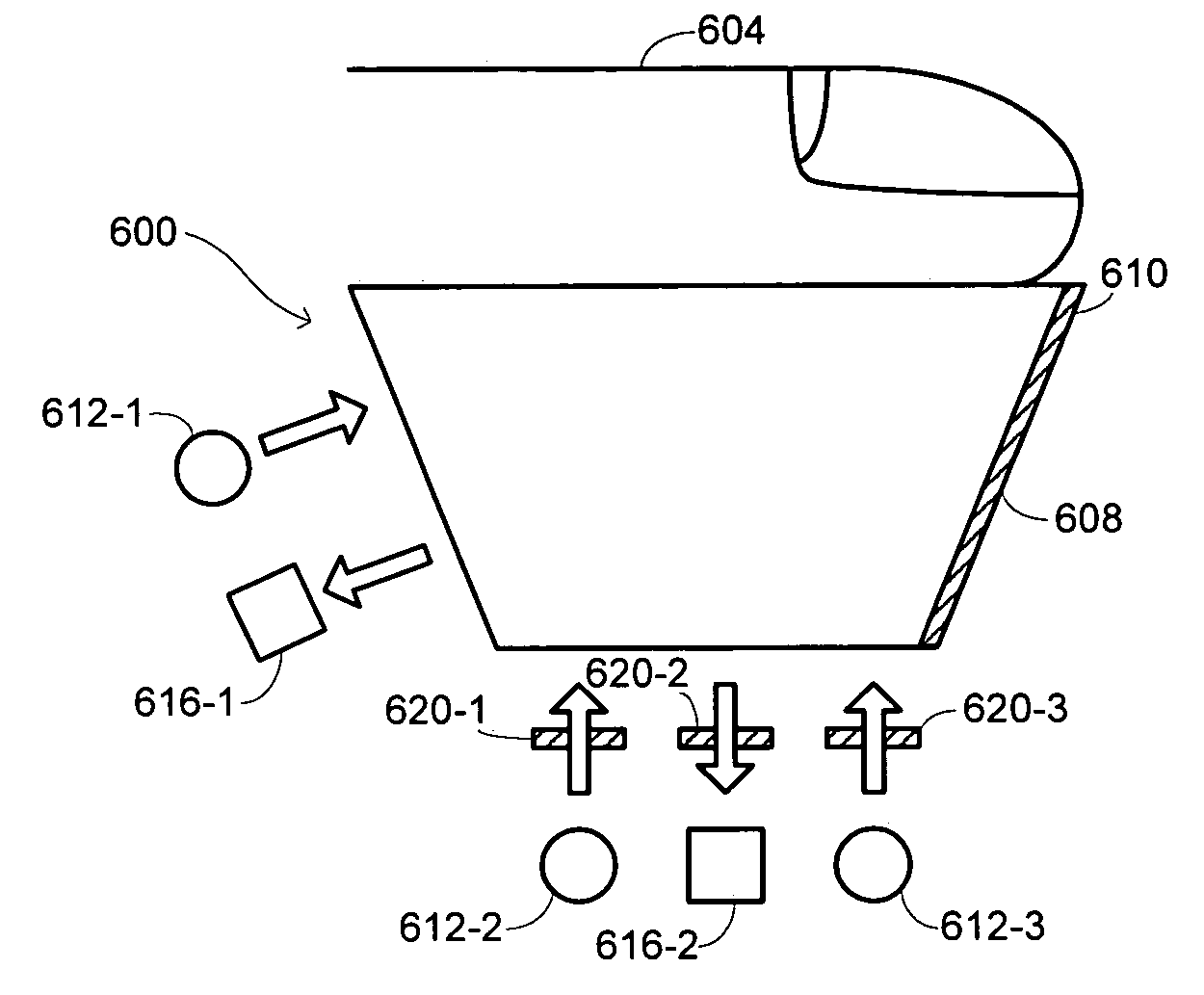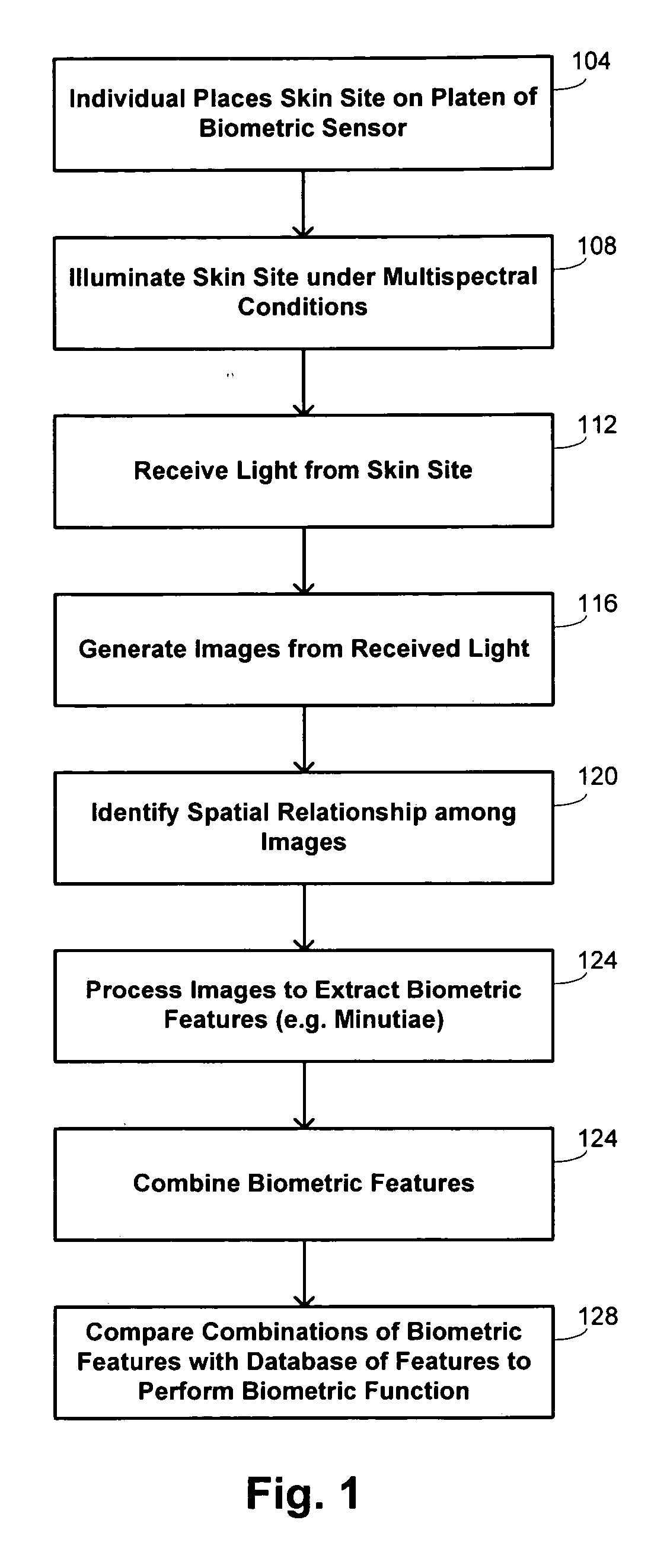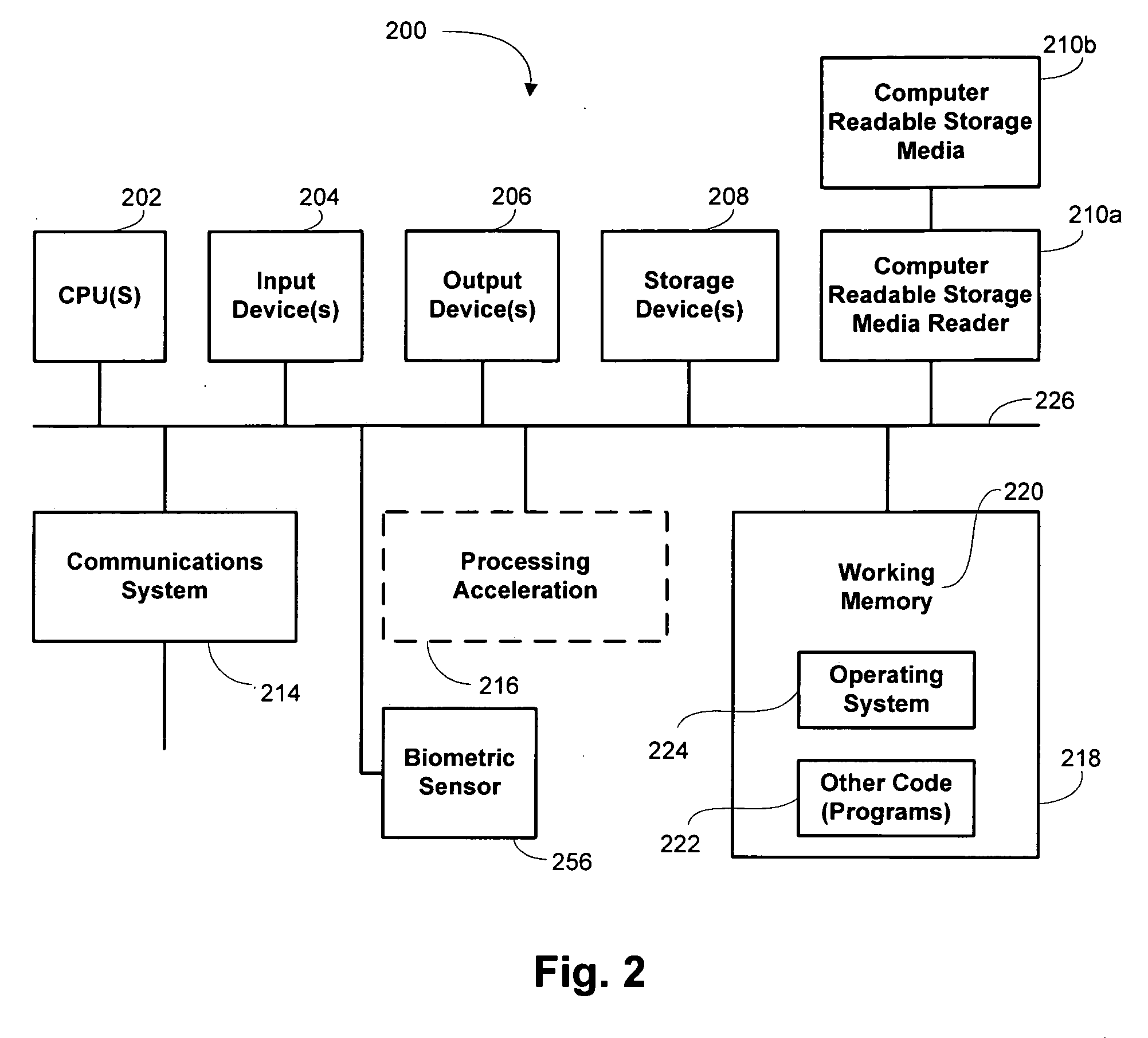Systems and methods for improved biometric feature definition
a biometric and feature technology, applied in the field of biometrics, can solve problems such as skin distortion, changes in image contrast, other artifacts, and introduction of artifacts, and achieve the effect of reducing the ability to properly determine matching fingerprint images
- Summary
- Abstract
- Description
- Claims
- Application Information
AI Technical Summary
Problems solved by technology
Method used
Image
Examples
Embodiment Construction
[0031] Embodiments of the invention provide systems and methods for performing a biometric function that make use of the acquisition of multiple images of a skin site taken under different optical conditions during a single illumination session. The images thus contain different information about the skin site that may be combined in various manners to produce reliable definitions of biometric features. Use of a single illumination session permits the images to be generated for a substantially fixed position of the skin site, removing uncertainties in the relative orientation of features between images and resulting in increased accuracy and reduced processing requirements.
[0032] The term “biometrics” refers generally to the statistical analysis of characteristics of living bodies. One category of biometrics includes “biometric identification,” which commonly operates under one of two modes to provide automatic identification of people or to verify purported identities of people. A...
PUM
 Login to View More
Login to View More Abstract
Description
Claims
Application Information
 Login to View More
Login to View More - R&D
- Intellectual Property
- Life Sciences
- Materials
- Tech Scout
- Unparalleled Data Quality
- Higher Quality Content
- 60% Fewer Hallucinations
Browse by: Latest US Patents, China's latest patents, Technical Efficacy Thesaurus, Application Domain, Technology Topic, Popular Technical Reports.
© 2025 PatSnap. All rights reserved.Legal|Privacy policy|Modern Slavery Act Transparency Statement|Sitemap|About US| Contact US: help@patsnap.com



